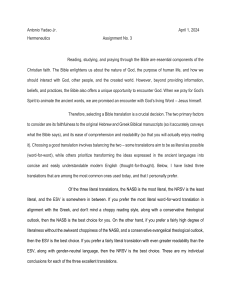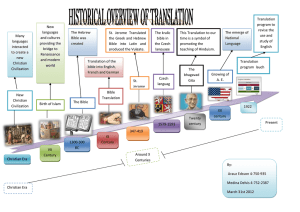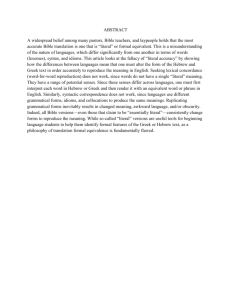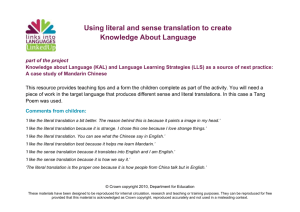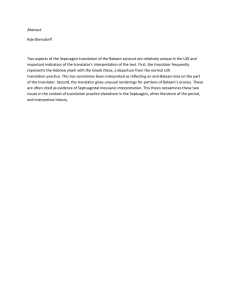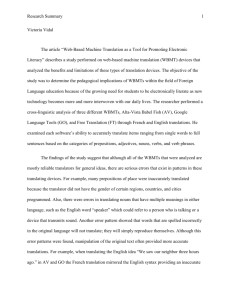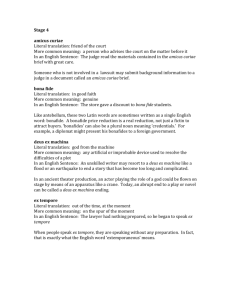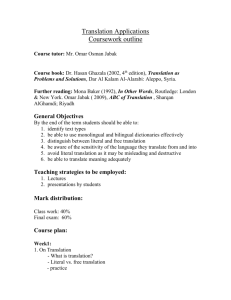Relationships of Bible Versions
advertisement
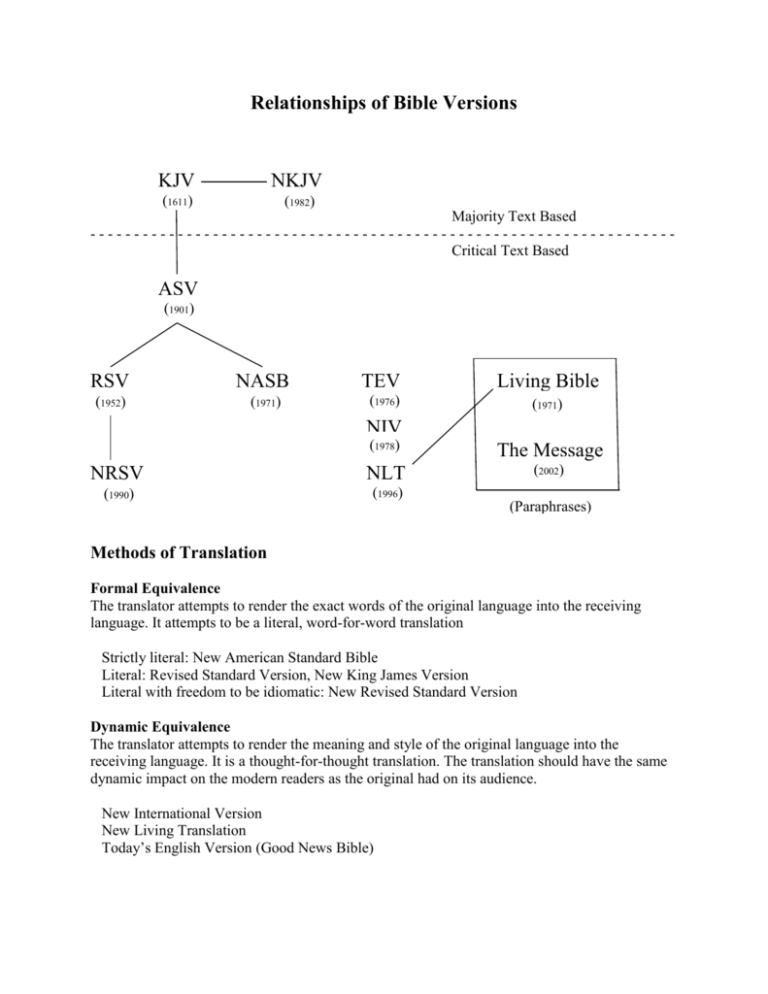
Relationships of Bible Versions KJV NKJV (1611) (1982) Majority Text Based - - - - - - - - - - - - - - - - - - - - - - )- - - - - - - - - - - - - - - - - - - - - - - - - - - - - - - - - - - - - - - - - - - - Critical Text Based ASV (1901) ) RSV NASB TEV Living Bible (1952) (1971) (1976) (1971) ) ) )NIV (1978) ) NRSV (1990) )NLT (1996) ) ) The Message (2002) ) (Paraphrases) Methods of Translation ) Formal Equivalence The translator attempts to render the exact words of the original language into the receiving language. It attempts to be a literal, word-for-word translation Strictly literal: New American Standard Bible Literal: Revised Standard Version, New King James Version Literal with freedom to be idiomatic: New Revised Standard Version Dynamic Equivalence The translator attempts to render the meaning and style of the original language into the receiving language. It is a thought-for-thought translation. The translation should have the same dynamic impact on the modern readers as the original had on its audience. New International Version New Living Translation Today’s English Version (Good News Bible)

